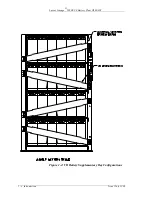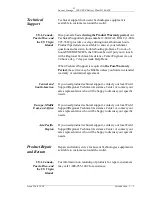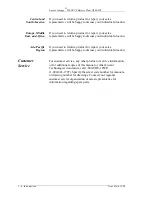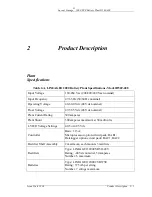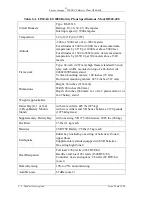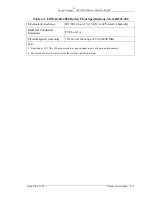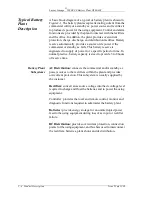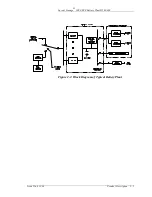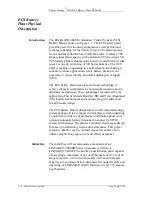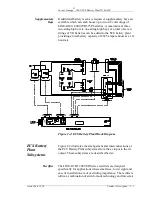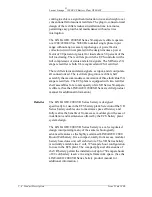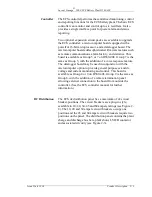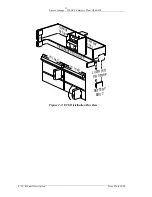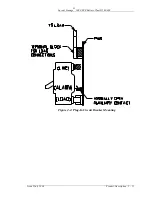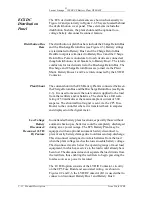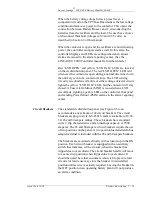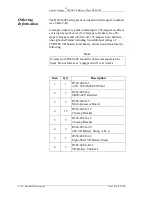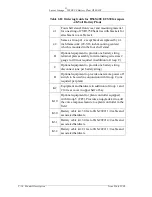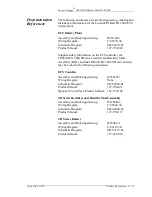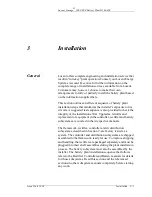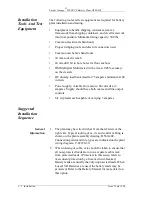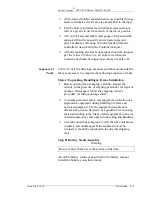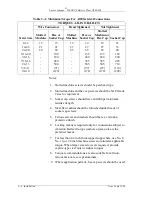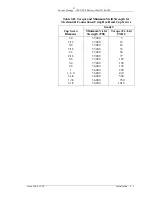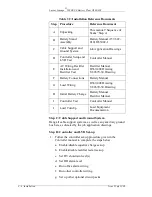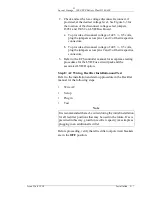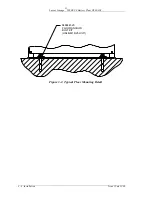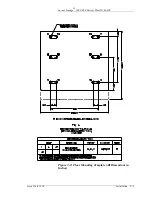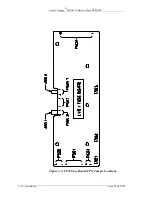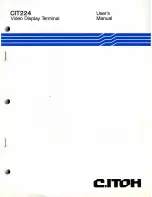
Lucent Lineage
®
2000 ECS Battery Plant H569-408
2 - 12 Product Description
Issue 2 July 1996
ECS DC
Distribution
Panel
The ECS dc distribution elements are shown schematically in
Figure 2-2 and pictorially in Figure 2-3. They are located behind
the dc distribution cover panel. These elements include the
distribution bus bars, the plant shunt and the optional low-
voltage battery disconnect/reconnect feature.
Distribution Bus
Bars
The distribution or plant bus bars include the Charge Return Bus
and the Discharge Return Bus (see Figure 2-3). Battery strings
are terminated to Battery Bus 1 and the Charge Return Bus.
Rectifier output is terminated to Battery Bus 2 and the Charge
Return Bus. Power conductors for load circuits are connected,
though distribution circuit breakers, to Battery Bus 2. The return
conductors for load circuits tie to the Discharge Return Bus. The
Discharge and Charge Return Buses are joined via the Plant
Shunt. Battery Buses 1 and 2 are interconnected by the LVD/R
Contactor.
Plant Shunt
The current shunt in the ECS Battery Plant is connected between
the Charge Return Bus and the Discharge Return Bus (see Figure
2-3). It is used to measure the total current supplied to the load
from the rectifiers and/or batteries. The shunt has a full scale
rating of 50 millivolts at the maximum plant current of 300
amperes. The shunt millivolt signal is sent, via the CP5 Fuse
Board, to the controller where it is translated back to amperes
and displayed on the digital meter.
Low Voltage
Battery
Disconnect/
Reconnect (LVD/
R) Feature
In unattended battery plant locations, especially those without
automatic back-up ac, batteries could be completely discharged
during an ac power outage. The ECS Battery Plant may be
equipped with an optional automatic battery disconnect to
prevent costly battery damage due to unforeseen deep discharge.
This disconnect is designed to isolate batteries from the load
when the plant voltage reaches the lowest usable battery voltage.
The disconnect level is below the operating range of most load
equipment, in which case service to the load would already have
been lost. The disconnect does not separate the load circuits from
the rectifiers, thus enabling the rectifiers to begin powering the
load as soon as ac power is restored.
The LVD/R option consists of the LVD/R Contactor, circuitry
on the CP5 Fuse Board and associated wiring. As shown in
Figures 2-2 and 2-3, the LVD/R Contactor (K1) is used either to
connect or disconnect Battery Bus 1 and Battery Bus 2.

